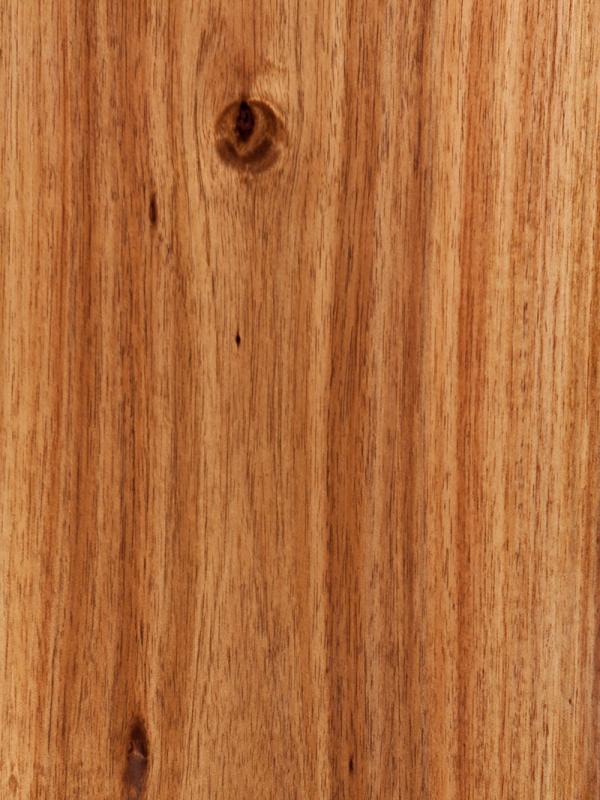
Family: Fabaceae or Leguminosae, the legume family; the mimosa group.
Origin: Acacia grows in the mountain districts of southern New South Wales, Victoria, South Australia and is also found in Tasmania.
Other Common Names: Australian Blackwood, Tasmanian Blackwood, Blackwood.
The Tree: An evergreen, it normally reaches heights of 30 to 60 feet with a bole diameter of up to 20 inches, it varies from a small mountain shrub to heights of 110 feet making it one of Australia’s largest acacias. There are about 13 pairs of oblong leaflets, 3 to 5 inches long, on each of the 2 to 5 bipinnate leaves, it has whitish or light yellow flowers in clusters of globular heads. The fruits are legumes, 2 to 4 inch, mid-brown pods that twist in up to 2 complete coils when mature. The gray bark is hard and longitudinally furrowed and may be up to 2.5 inches thick on larger trees.
Appearance: Dark, golden brown with black streaking to pale brown with some red. Usually straight grained with even, medium to fine texture and some curly, interlocking grain with an attractive figure.
Density: Moderately hard and heavy. Average reported specific gravity is 0.57(ovendry weight/green volume), equivalent to an air-dried weight of 44 pcf. Janka hardness is 1100 pounds of force.
Drying & Shrinkage: Care has to be taken to make sure it is properly seasoned to about 12% moisture content. 1 inch thick boards are easily dried with no degrade, checking or cupping. Average reported shrinkage values (green to ovendry) are 3.4% radial and 9% tangential.
Working Properties: Moderate blunting effects on tools, is easy to work with and has excellent finishing properties. The curly grained wood however requires careful techniques to obtain the finest surface. It takes nails and screws well. Generally, glued pieces hold but there is some variability in this respect. Possible adverse reactions from the dust and wood include dermatitis, asthma, nose and throat irritation; sensitizer.
Durability: In Australia it is susceptible to damage by common furniture beetles and powder post beetles. Preservative treatment cannot be used as it is very resistant to this kind of treatment.
Uses: One of the finest Australian woods for cabinetry and is used frequently in the crafting of billiard tables, deluxe passenger rail cars and interior joinery. It is ideal for turnery and carving and has been successfully used for gunstocks. The highly figured pieces make excellent furniture. It can be cut into veneers and used for paneling.
Availability: On a commercial scale in Australia, supplies are sufficient, but since little is exported, other countries have difficulty in securing Acacia and it is expensive.